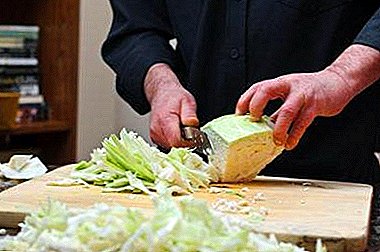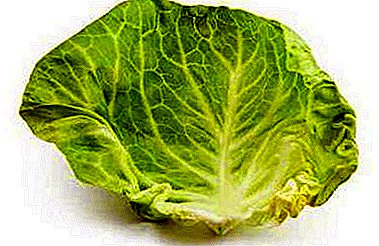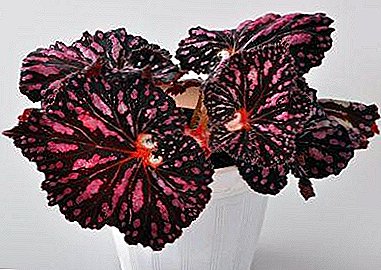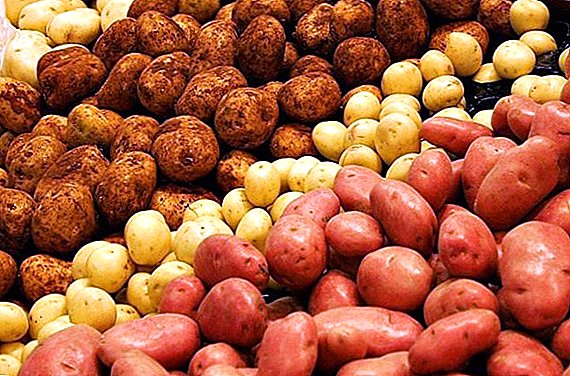
Cabbage is a very popular vegetable in Russia. And all because it contains many useful elements and has a relatively low cost.
Of course, there are people who do not like her for some personal reasons, especially this is often found among children. But in most cases, cabbage in one form or another can be found in every family.
It is often used for medicinal purposes. It helps or may be harmful in diabetes, find out below. After all, with this disease it is very important to follow the rules of nutrition. Consider whether or not you can eat vegetables from the “cabbage family” in type 1 and type 2 diabetes, and also show you how to cook them correctly.
Can diabetics eat this vegetable?
Diabetes mellitus is a disease associated with metabolic disorders, namely the improper absorption of glucose. The disease develops against the background of a lack of insulin and is divided into two types.
With the first type of disease
This type is characterized by complete dependence on insulin, since the body is not able to produce it on its own. Most common in children. In this disease, the following types of cabbage are useful.
- Belokochannaya. The head contains a sufficient amount of vitamin C, which, if properly stored, does not disappear for eight months. It protects the circulatory system from damage, which often happens with type 1 diabetes.
- Red (red). This variety of cabbage is similar to white cabbage, but it has a characteristic purple color, as well as double the content of vitamin C and carotene. It has a similar set of macro-and micronutrients, which means it is also useful. But it has a coarser fiber, so it can be eaten, however, in smaller quantities and not every day.
- Colored. It is rich in amino acids. Absorbed almost completely, without affecting the level of sugar. Due to biologically active alcohols, it regulates increased cholesterol and protein metabolism. For patients with both types is a mandatory vegetable in the diet.
 Broccoli. Contains vegetable protein, which permanently suppress hunger. And also optimizes the activity of the glands, which is important in diabetes.
Broccoli. Contains vegetable protein, which permanently suppress hunger. And also optimizes the activity of the glands, which is important in diabetes.- Kohlrabi. This cabbage, like her sisters, contains many useful things and is able to retain its benefits even after defrosting. It slows down the absorption of carbohydrates, supplies calcium, magnesium and potassium. It is indicated for sufferers of the first type of disease, especially in the winter season.
- Brussels. It is one of the most useful varieties. Similarly colored, rich in amino acids. Plus has in its composition easily digestible protein, like broccoli. Therefore, having a low calorie content, it saturates well. This is for a diabetic.
- Chinese (Beijing). This salad cabbage is considered a source of longevity, as it contains the amino acid lysine. It stimulates the immune system and purifies the blood. For people with the first type, these are important factors.
With the second type
A more common type of illness that occurs in 90% of diabetics. Often happens in people from thirty five years. It is characterized by obesity, overeating at normal or elevated levels of insulin. People with this type of diabetes are advised to follow the rules of nutrition, to monitor the glycemic index of food consumed.
Fortunately, all varieties of cabbage are considered dietary, which means they are suitable for consumption by overweight diabetics. But it should be noted that kohlrabi contains more sucrose, unlike other varieties, therefore it is distinguished by a sweetish taste. However, it is not forbidden to eat, it is simply recommended to use in moderate amounts no more than once a week.
Is there any difference in the way of cooking?
Ideally, include raw cabbage in the diet. But not always there is such an opportunity, so it is allowed to cook and simmer it, as well as make sour. It is better to refuse frying, as for this, in most cases, oil is necessary, which is a source of fat. And it is contraindicated for people with diabetes, especially the second type.
As for sauerkraut, the opinion of nutritionists and doctors is still not unambiguous. But the balance is leaning in a positive direction, because as a result of this treatment, the nutrients in the cabbage become even larger. In the process of fermentation, the content of ascorbic acid increases, while the low caloric content and low glycemic index remain.
Useful properties of the product
It should be noted that any varieties of cabbage are recommended for consumption by people suffering from diabetes of both types, since they have the following advantages:
 rich in vitamins, minerals, phytoncides and enzymes;
rich in vitamins, minerals, phytoncides and enzymes;- reduce cholesterol levels;
- make your own enzymes work, improving the quality of food digestion;
- stimulate the general metabolism;
- activates the functioning of the pancreas, thereby reducing blood sugar levels;
- help reduce weight;
- beneficial effect on the work of blood vessels and the heart, which are heavily loaded due to illness;
- raise the body's resistance to bacteria and infections.
Some of the positive points listed above seem to be indirect with respect to diabetes.
On a note. People suffering from this disease are susceptible to both a general weakening of the immune system and a decrease in the effective functioning of other systems and organs. Therefore, the use of cabbage will serve as a good support to the body.
Tasty soup recipe
Since there are many recipes for diabetics from white, red, cauliflower, Chinese cabbage, and broccoli on the Internet, we will tell you how to make kohlrabi diet soup.
Ingredients:
- minced chicken or beef - 500 grams;
- celery - 50 grams;
- carrots - 50 grams;
- medium bulb;
- kohlrabi - 200 grams;
- salt, pepper, seasoning to taste;
- sweet pepper - 1 piece;
- fresh greens;
- water - 2 liters.
Preparation Procedure:
- Wash and peel all the vegetables.
- Put water on fire.
- Finely chop the onion, mix in the minced meat with salt and spices, form meatballs.
- Grate carrots, celery, kohlrabi and pepper cut into strips.
- Put the meatballs into boiling water, bring to a boil, reduce the heat, cook for at least fifteen minutes (beef can be cooked longer).
- Add vegetables, spices and salt, cook for another fifteen minutes.
- When serving, sprinkle with fresh, finely chopped greens.
Cabbage is a very useful vegetable, especially for diabetics. Therefore, it is certainly worth including it in the diet with this disease. And so that she is not tired, you need to experiment with different varieties and cooking options. Do not forget about the possible harm that occurs when excessive use or improper combination with other products.


 Broccoli. Contains vegetable protein, which permanently suppress hunger. And also optimizes the activity of the glands, which is important in diabetes.
Broccoli. Contains vegetable protein, which permanently suppress hunger. And also optimizes the activity of the glands, which is important in diabetes. rich in vitamins, minerals, phytoncides and enzymes;
rich in vitamins, minerals, phytoncides and enzymes;









